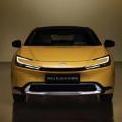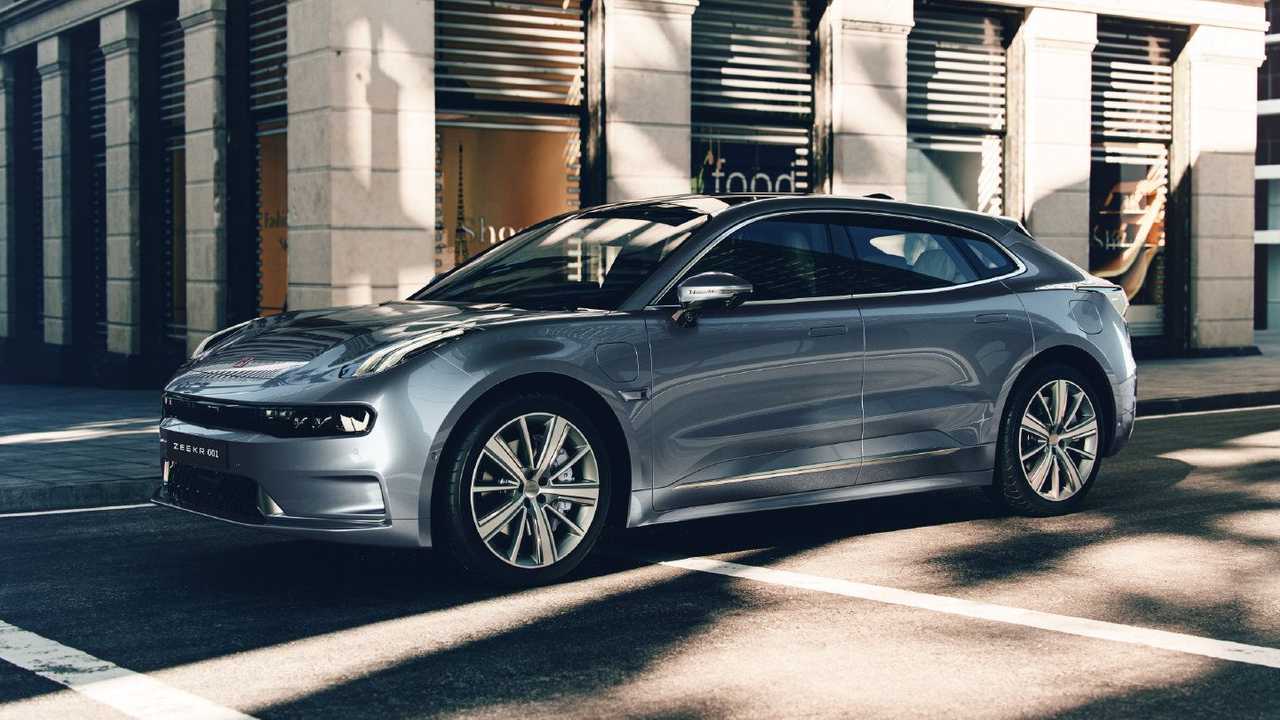-
Numero contenuti pubblicati
6617 -
Iscritto il
-
Giorni Massima Popolarità
9
Tipo di contenuto
Forum
Galleria
Calendario
Download
Articoli del sito
Store
Blog
Tutti i contenuti di Maxwell61
-
Quelli della mia 130 coupé del 1974 ❤️
-
Model 3 è fine serie per rimnovo imminente, ma comunque la SR 60 kWh LFP da 510 km 18" costa 39500 con ecobonus senza rottamazione (altrimenti 37500) inclusi 980 eur messa in strada. Difficile da battere, se uno guardasse solo i prezzi e non badasse ad altro.
- 118 risposte
-
- 308 ev
- peugeot 308
-
(e 5 altri in più)
Taggato come:
-
2030? Tra blocchi ai diesel nelle città che salgono di categoria quasi ogni anno e crolli di vendita che sono già in corso da qualche anno, è il mercato che li sta escludendo rapidamente dal nuovo, da una parte, e con ribassi di valore commerciale (che è quello a cui alludevo) sull'usato. Ovvero, il mercato arriverà al ban economico dei diesel ben prima di quello ufficiale perchè lo dicono i numeri di vendita, già dal 2020, tre anni fa: https://auto.everyeye.it/notizie/auto-diesel-crollo-fine-perse-milione-vetture-5-anni-637987.html Probabilmente nei prossimi anni (vicini) resta solo chi sfinisce l'auto perchè fa 50,000 km/anno e la rivende dopo 3 anni... Hai visto quanto costano Renault Megane (che è una B da 4 metri, a 45000 E) o Kona Ev o Niro EV? Questi si stanno allineando tra loro, ma Tesla gli sta sparigliando le carte. Qualcuno postava che WV sta iniziando la guerra dei prezzi anche lei, ma siamo solo agli inizi. E arrivano i cinesi a breve. Credo che assisteremo a stravolgimenti ma ci vorrà ancora un po di tempo. Le EV, proprio quelle problematiche per i prezzi, saranno terreno di lotte a sangue, secondo me.
- 118 risposte
-
- 308 ev
- peugeot 308
-
(e 5 altri in più)
Taggato come:
-
Non sono molto d'accordo, a causa della taglia e segmento dell'auto, in un periodo transizionale per le ricariche pubbliche, anche considerando la giungla dei costi ricarica pubblica fast (che ricordo sta a un euro al kWh per il pay per use, ovvero a occhio il doppio che andare a benzina..). Edit: questo vale anche all'estero. Ergo autonomia alta che ti consente un A/R di viaggi di media lunghezza caricando a casa a basso costo, secondo me fa la differenza. 411 km WLTP (e la SW sarà anche meno) è troppo poco per quanto costerà. Il discorso è diverso per auto più economiche/segmento B. Se di ID3 si sono vendute poche 77 kWh è perchè costa un botto, essendo pure disponibile solo con allestimenti ricchi. Ecco La diesel da comprare nel 2023 è un suicidio economico per la rivendita, la benzina e la plug-in a conti fatti consumano un botto, la plug-in ancora di piu e con range EV basso, la BEV con range basso e inferiore ai CUV-SUV concorrenti. Bella line-up ☺️
- 118 risposte
-
- 1
-

-
- 308 ev
- peugeot 308
-
(e 5 altri in più)
Taggato come:
-
La casa automobilistica cinese, dunque, fa sul serio in Europa dove intende ritagliarsi uno spazio nel mercato auto. Ricordiamo che il marchio è già presente in diversi altri Paesi del Vecchio Continente tra cui Norvegia, Svezia, Danimarca, Olanda, Belgio, Lussemburgo e Germania. Al momento, le vendite non sono ancora partite in Italia ma già sappiamo che BYD intende sbarcare anche nel nostro Paese, forse già nel corso del 2023. In Europa, BYD al momento ha deciso di portare i modelli BYD ATTO 3 (qui la nostro prova), BYD HAN e BYD TANG. Inoltre, nel corso del 2023 dovrebbero essere resi disponibili anche i modelli BYD Seal e BYD Dolphin. A livello globale, BYD è presente in oltre 70 Paesi. Secondo la casa automobilistica, nel 2022 ha venduto circa 1,85 milioni di veicoli Plug-in ed elettrici. https://www.hdmotori.it/byd/articoli/n566623/byd-europa-irlanda-finlandia-islanda/
- 101 risposte
-
- byd seal 2022
- atto 4
-
(e 5 altri in più)
Taggato come:
-
Il sito BYD EU annunciato ufficialmente il debutto EU e presentazione ufficiale agosto 2023. https://www.byd.com/eu/news-list/BYD_SEAL_Dynamic_and_Intelligent.html Mi sa che aspetto ancora un pò per la Prius, sono Osbornizzato... 😊 BYD SEAL: Dynamic and Intelligent April 12, 2023 Appealing, dynamic, sporty, and technologically advanced full-electric D-segment sedan Available with a highly efficient Blade Battery - 82 kWh with up to 570km range (WLTP) and DC Charging (30-80%) up to 150 kW in just 26 minutes Available in rear-wheel and all-wheel drive configurations Advanced Cell-to-Body technology and e-Platform 3.0 for greater efficiency, aerodynamics, power, body rigidity and space utilisation Athletic, sporty, and dynamic, but also intelligent, and equipped with a high-tech DNA, the new BYD SEAL has the looks, power, and intelligence to impress European drivers. /content/dam/byd-site/eu/press-release/list-page/2023/0412seal.jpg BYD SEAL——Dynamic and Intelligent D-segment Sedan BYD, the world's leading manufacturer of New Energy Vehicles (NEVs) and power batteries, presents the BYD SEAL as a sporty, high-tech vehicle, but the BYD SEAL is much more. Like the BYD DOLPHIN, the BYD SEAL is part of the BYD Ocean series. It features an Ocean Aesthetics design concept resulting in a dynamic, stylish, and highly recognisable visual symbol. The BYD SEAL demonstrates power and athleticism with a drag coefficient of just 0.219 Cd. The low-to-the-ground body style slices like a razor blade through the wind. Its sleek nature-inspired design is emotionally rich, high-tech, and appealing. SEAL is not only dynamic, intelligent, and sporty but also a versatile full-electric four-door sedan that comfortably seats five people and has a large boot space of 402 litres and a 53-litre frunk in the front end of the car to store goods. Advanced Cell-to-Body Technology BYD SEAL is the first vehicle to implement the Cell-to-Body (CTB) technology, which fully integrates the BYD Blade Battery into the entire vehicle structure and enhances the vehicle's safety. It is inspired by the high-strength honeycomb aluminium panel structure. The CTB technology integrates the battery pack's top cover with the traditional body floor structure, forming a sandwich-like structure of the top cover, the BYD Blade Battery and the tray. The power battery system volume utilisation is increased by 66%, and the system energy density is increased by 10%. The CTB battery system serves as a source of energy and as a structural component. The SEAL has a torsional stiffness of 40,500N.m/degree, increasing handling limits and offering an excellent platform for the car's comfort, safety, and performance. CTB technology also improves space efficiency. SEAL has a 10mm lower body height with the same clear height inside the vehicle as the conventional structure, resulting in a more low-slung shape and improved aerodynamic performance and visual impact. iTAC (Intelligent Torque Adaption Control) The new iTAC (Intelligent Torque Adaption Control) has superseded the old method of restoring vehicle dynamics by only lowering power output with various control methods such as torque shift, appropriate torque reduction, or negative torque output. Due to the increased recognition speed and change in adjustment methods, iTAC can integrate the vehicle’s own state as well as the driver’s horizontal and vertical control needs, and advance power distribution and adjustment, fully utilising the vehicle’s power potential, improving safety performance and driving comfort, and widening the handling limits. Mighty Power Unit BYD SEAL features an 8-in-1 electric powertrain with an efficient electric motor that delivers 230 kW (313 PS) on the rear-wheel-drive version. The all-wheel drive configuration features an 8-in-1 and a 3-in-1 electric powertrain that sends 160 kW to the front wheels and 230 kW to the back wheels for a maximum combined motor power output of 390 kW (530 PS). BYD SEAL AWD has semi-active suspension technology with variable frequency dampers for ultimate responsiveness. When the road conditions are smooth, the damping is relatively high, allowing for more stable vehicle dynamics and better handling. When there are potholes or rough surfaces, the damping automatically reduces to absorb the impact of the road better, assuring a high-quality ride. Like all other BYD passenger vehicles, BYD SEAL also benefits from the Cobalt Free Lithium Iron-Phosphate (LFP) BYD Blade Battery, which not only ensures safety, durability, and performance but also provides more interior space for the driver and passengers. BYD SEAL will be offered in Europe in two trim levels, with 82 kWh rear-wheel drive powertrain and all-wheel drive powertrain, with WLTP-ranges ranging from 520 km to 570 km for the all-wheel drive variant. /content/dam/byd-site/eu/press-release/detail-page/2023/0412seal/PC02.jpg BYD SEAL on the Road Four Driving Modes The BYD SEAL offers four distinct driving modes, catering to a variety of driving preferences and conditions. These modes include: - ECO mode, which prioritizes energy efficiency and extends the driving range; - Normal mode, providing a balanced driving experience for everyday use; - Sport mode, emphasizing performance through aggressive acceleration and sharper handling; - Snow mode, designed to enhance traction and stability on slippery surfaces like snow or ice. Each mode is tailored to deliver an optimized and customized driving experience, ensuring both comfort and safety for the driver. High Power Charging BYD SEAL uses a high-voltage electric drive boost charging solution, which allows for faster charging and significantly reduces the waiting time for users to charge. The technology is developed based on the electric drive assembly, charging and distribution assembly and innovatively uses the motor inductor to replace the boost inductor in the original boost solution to meet the 420-750V voltage range of charging piles with high power DC charging. As the system is highly integrated, the two modes of motor charging and driving are multiplexed, and during the charging process, BYD SEAL reduces the heat generation of the charging and distribution assembly for more reliable performance. The high-voltage electric drive boost charging solution can make full use of the national charging standard current limit to achieve a wide band of constant power charging. The charging power is 11 kW AC 3 phase. With a 150 kW DC charger, the battery can be replenished from 30% to 80 % in just 26 minutes. The maximum charging peak is 150 kW. Wide Temperature Ranges High-efficiency Heat Pump System BYD SEAL comes standard with a wide temperature range high-efficiency heat pump system, which allows for efficient regulation of the battery pack temperature via direct cooling and direct heating of the refrigerant, as well as control of the passenger compartment temperature with low energy consumption. The heat pump device can also absorb waste heat from the electric powertrain and work in temperatures ranging from -30°C to 60°C. BYD SEAL supports VtoL(Vehicle to Load), allowing the car to be used as a portable power supply for electrical devices (total output up to 3kW). Learning from Nature BYD SEAL has been created by a design team led by Wolfgang Egger, BYD's Global Design Director. The design team followed the principle of learning from nature and sought inspiration from the vast ocean to create an emotionally rich, recognisable and appealing design. The "Ocean Aesthetic" design concept has evolved, with the vehicle adopting a more dynamic, richer, and sportier aesthetic. The car's front end has a powerful sense of forward motion, with an "X-shape" in the dynamic perspective. The front of the BYD SEAL has the look and feel of a sports car, with its full, sculpted, captivating curves providing the sense of the momentum of waves. Sleek Silhouette BYD SEAL’s body lines are sleek and athletic. Its side silhouette is smooth and natural, with a low front, sloping A-pillar, rounded roof, sloping fastback, and slightly upturned ducktail shape, which emphasises the characteristic of a sports coupé. The wheelbase of the BYD SEAL provides occupants with legroom similar to that of an executive saloon. Simultaneously, the CTB framework guarantees occupant headroom while accommodating low-slung styling. Furthermore, SEAL offers more passenger room due to a flat floor, a thinner battery pack, and an optimised rear foot-to-battery pack size. The SEAL’s rear compartment meets the user’s everyday storage requirements, while the front compartment maximises space utilisation in the front cabin, extending storage space inside the vehicle. In addition, SEAL provides over 20 flexible storage spaces for small objects. The front of the sub-dashboard has a wireless charging spot for two mobile phones. There is a functional semi-open storage area under the sub-dashboard in addition to the standard central armrest box. In addition to the map compartments on the front seat backs, there are two mobile phone pockets for rear passengers to store their personal digital devices. Surrounding Sports Seats SEAL's front seats have a sporty appearance with soft and firm seat padding and excellent wrapping and support. The driver's seat is electrically adjustable in eight directions, and users of all sizes can find a comfortable driving position with a four-way adjustable steering wheel. The AWD's driver's seat has four-way power-adjustable lumbar support to relieve the fatigue of long journeys. In addition, the front seats of the vehicle's mid and high-end models are equipped with ventilation/heating functions that satisfy users' specific requirements in various climatic regions and provide a comfortable driving experience under varying temperature conditions. The AWD/Design model also includes a driver's seat position memory function, which consists of two sets of position memories assisting ease of access. The rear seats provide a comfortable seating position for three adult occupants. The seat back, cushion padding, and angles of both the seat back and cushion angle have been fully optimised, easing any fatigue on long journeys. Maximized Skyview and Efficiency BYD SEAL has an oversized panoramic sunroof, providing occupants with an extensive view. The vehicle’s front doors are double-glazed with laminated glass for better safety and excellent sound and heat insulation. The rear of the Design version is equipped with privacy glass with a sunlight transmission rate of ≤25%, providing better shading and privacy for the rear occupants. The concealed door handle design of the BYD SEAL, which is flush with the door when the vehicle is in motion, helps to enable airflow to pass at high speed, thereby reducing wind resistance and overall vehicle energy consumption. In conjunction with the keyless entry system, the handles rise automatically when the vehicle is unlocked. Driver and Safety Technology as Standard Smart connectivity and leading infotainment are other primary elements of the BYD SEAL, which is equipped with a 4G intelligent connection system bringing leading technology experiences and Over The Air (OTA) updates as a way to update infotainment features. BYD SEAL has a unique 15.6 rotatable screen equipped with the industry-leading intelligent voice control function, with more accurate voice recognition, faster voice wake-up, stronger semantic recognition, more comprehensive function execution and more natural voice response, and integrated Apps including Android Auto and Apple CarPlay. The infotainment system above the steering wheel is a 10.25-inch full instrument LCD panel. The 12-speaker Dynaudio Performance Audio System with 12 speakers provides premium quality sound, and smartphone wireless charging is another convenient feature. Safety & Driving Assistance There is an abundance of safety and advanced driver assistance features as standard equipment in BYD SEAL. All models feature Forward Collision Warning, Automatic Emergency Braking, Rear Collision Warning, Rear Cross Traffic Alert and Rear Cross Traffic Brake, Lane Keep Assistance, Lane Change Assist, and Emergency Lane Keep. Adaptive Cruise Control and Intelligent Cruise Control improve the driving experience. The panoramic camera provides 360-degree visibility for the driver for safe vehicle manoeuvring. In addition, further driver aids include Blind Spot Detection System, ESP, Traction Control, Hill Decent Control, Automatic Vehicle Hold, Intelligent Speed Limit Information, and Intelligent Speed Limit Control. Cutting-edge lighting technology also provides a broader beam of light to assist visibility when driving at night, with High Beam Assist, Adaptive Front Headlights and Follow Me Home as standard. BYD SEAL will be available in 4 standard colours, 2 optional colours and 6 interior trim colours. More information will be announced closer to the official launch of BYD SEAL in August 2023. Main Specifications BYD SEAL Items BYD SEAL Dimension (L/W/H) 4,800/1,875/1,460 wheelbase(mm) 2920 Drive type RWD/AWD Top speed (km/h) 180 Motor power(kW) 230/390 0-100km/h acceleration time (s) 5.9/3.8 Wheel size (inch) 19 Electric range (km) 570/520 (WLTP combined) Trunk volume (L) 402+53 frunk Seating capacity (occupants) 5 Battery type BYD Blade Battery (LFP) Rated capacity (kWh) 82 Charging power 150kW DC 11kW AC (3 phase) DC charging time (30-80%, min) 26 Heat Pump Standard V2L function Standard
- 101 risposte
-
- byd seal 2022
- atto 4
-
(e 5 altri in più)
Taggato come:
-
Si Heavy ha fatto un buco nel cemento enorme e fatto schizzare frammenti ovunque. Il Muskio lo temeva già in fase di costruzione... Comunque esperienza a pacchi, e questo è il modo di procedere di Space x, o non si avrebbe avuto mai Falcon 9 che atterra in verticale su un pontone in mezzo al mare. Fare cosi ci credo che sia la cosa di gran lunga meno costosa e rapida, basta guardare i costi e le cazzate di SLS e della sua famosa rampa e già si capisce chi ha avuto l'approccio migliore. 1 miliardo di $ per una torre di lancio di ferro monouso che è risultata pendente. Chi è il furbo? 😁 https://arstechnica.com/science/2018/02/nasa-spends-1-billion-for-a-launch-tower-that-leans-may-only-be-used-once/ A me sembra che sia stata un successo, visto quante autodistruzioni saranno pianificate per il prossimo futuro.
- 242 risposte
-
De Meo: Di conseguenza, è ora convinto che l'obiettivo principale del settore automobilistico europeo non sia quello di reinventare il motore a scoppio, bensì di recuperare l'enorme divario dalla Cina: a suo avviso, da quantificare in almeno dieci anni, in particolare nelle tecnologie per le batterie. E a Shangai l'annuncio che sono pronti con le nuove batterie a stato semi-solido da 500 Wh/kg... https://www.electrive.com/2023/04/19/catl-launches-ultra-high-energy-condensed-battery/ CATL is showing novel ‘Condensed Battery’ technology in Shanghai, which claims an energy density of 500 Wh/kg at the cell level. The Chinese battery giant considers it suitable for electric aircraft but also envisions use in road vehicles, with series production to start this year.
- 4774 risposte
-
- 2
-

-
- transizione ecologica
- bev
-
(e 2 altri in più)
Taggato come:
-
Da vedere. Telaio e sospensioni, molto interessante. Se sono veri i 50000 eur, ci siamo proprio.
- 101 risposte
-
- byd seal 2022
- atto 4
-
(e 5 altri in più)
Taggato come:
-
Ma anche proprio no. 😁 Air Suspension Note When Model S starts, you may hear the sound of the compressor as the air suspension system’s reservoir fills with air. Your Model S is equipped with Adaptive Air Suspension that offers superior ride quality and allows you to choose a softer or firmer ride based on your preference. When carrying loads, the system also maintains a level height between the front and rear. You can manually adjust the ride height to suit your circumstances (for example, you can raise Model S when you need extra ground clearance, such as when driving on a steep driveway or ramp, in deep snow, over large speed bumps, parking curbs, etc.).
- 151 risposte
-
- 1
-

-
- maserati grecale folgore
- maserati grecale
- (e 7 altri in più)
-
Thug Life.
- 2 risposte
-
- rz outdoor concept
- lexus
-
(e 3 altri in più)
Taggato come:
-
E' cara pure in Cina, e soprattutto rispetto a Model Y, troppo: The car is available in six versions, including three single-motor versions prices of RMB 349,800, 387,800 and 417,800 three dual-motor versions prices of RMB 453,800, 483,800 and 533,800 This price range is significantly higher than that of the Model Y, three versions at RMB 261,900, 311,900, and 361,900.
- 46 risposte
-
In questo caso le sommano per un totale di 261 CV. Evidentemente gli 82 CV possono essere erogati dalla batteria interamente. Mi piace, ha un buon prezzo, il caricatore da 6,6 kW, ma il consumo in HV, 6.6 lt/100km in WLTP, è troppo alto. Avesse 100 km range EV Wltp, se ne poteva discutere. Anche sul Roma-Forli non ha ottenuto grande risultato consumo. 5.0 lt/100km rispetto ai 3,25 lt/100km della RAV 4 PHEV che ha 306 CV. https://it.motor1.com/reviews/577756/lynk-co-01-plugin-consumi/
- 83 risposte
-
Si stanno spostando tutti sulle batterie integrate al telaio e gli 800V, ora pure Xpeng. EU mi sembra un pò in ritardo anche su questo.
-
Non credo fermeremo l'avanzata cinese evitando di creare su Autopareri i sottogruppi per marchio o i marchi separati ed evidenziati (piuttosto che thread a sbalzo su singoli modelli) per chi ha singolo marchio, soprattutto per chi è già presente in EU o ha dichiarato prossimo arrivo. In compenso, ci eviteremmo il mal di testa
-
DA 60,000 Eur in su. https://insideevs.it/news/662724/polestar-4-suv-coupe-prezzo/ La Polestar 4 è lunga poco più di 4,83 metri e ha un passo di quasi 3 metri pensato per garantire la massima abitabilità anche ai passeggeri posteriori. La larghezza di 2,13 metri (specchietti inclusi) e l'altezza di 1,54 metri confermano la disponibilità di spazio interno che offre di serie anche tetto in vetro a tutta lunghezza (con funzionalità elettrocromica opzionale), illuminazione ambientale regolabile ispirata alla luce solare, oltre ai sedili reclinabili. Le ruote hanno diametro variabile da 20 a 22 pollici a seconda delle versioni. Polestar 4 Lunghezza 4.839 mm Larghezza 2.139 mm (inclusi specchietti) Altezza 1.544 mm Passo 2.999 mm Bagagliaio posteriore 500-1.536 litri Bagagliaio anteriore 15 litri Peso a vuoto 2.232-2.351 kg La versione più potente e veloce, che è anche la più veloce delle vetture di Polestar, è la Polestar 4 Long Range Dual Motor con due motori, trazione integrale, 544 CV totali e un'autonomia fino a 564 km. In questo caso la velocità massima è 200 km/h e per lo scatto 0-100 km/h impiega appena 3,8 secondi. La batteria è la stessa CATL al nichel-manganese-cobalto da 102 kWh della versione a trazione posteriore. Long Range Single Motor con 272 CV, batteria da 102 kWh nominali (94 kWh utilizzabili) e un'autonomia fino a 600 km nel ciclo WLTP. La Polestar 4 Longe Range Single Motor ha una velocità massima di 180 km/h e un tempo di accelerazione da 0 a 100 km/h di 7,4 secondi. Polestar 4 Longe Range Single Motor Polestar 4 Long Range Dual Motor Motore 1 sincrono a magneti permanenti 2 sincroni a magneti permanenti Potenza 272 CV 544 CV Coppia 343 Nm 686 Nm Trazione Posteriore Integrale Velocità massima 180 km/h 200 km/h Accelerazione 0-100 km/h 7,4 secondi 3,8 secondi Batteria 102 kWh (94 kWh utilizzabili) 102 kWh (94 kWh utilizzabili) Autonomia (WLTP) 600 km 564 km Consumo (WLTP) 16,7-16,8 kWh/100 km 14,8-14,9 kWh/100 km Polestar 4, la vista anteriore
- 46 risposte
-
- 1
-

-
Azz 4,80 mt, tutto è al di sopra di 2. E quindi lo sarà pure il prezzo. E' una 3 più economica. 102 kW di batteria, avrà una bella autonomia, vista gli exploit di efficienza su 2 2024.
- 46 risposte
-
Zeekr arriva in EU nel 2023 in Olanda e Svezia, vendite dirette, prevista copertura tutti i paesi per il 2026. Si parte con la bella Zeekr 001. https://carnewschina.com/2023/04/18/zeekr-will-enter-most-western-european-countries-by-2026-without-dealers/
- 108 risposte
-
- smart 1
- zeekr ufficiale
-
(e 7 altri in più)
Taggato come:
-
Presentato a Shangai l'upgrade di E7 con molte migliorie un po' dappertutto ma non facelift. Da documentare meglio.
-
Bellissima, ma non capisco perché nessuno copia Lucid per il cruscotto, questo format schermetto + schermone è antiestetico.. Notare eye tracker = hands free.
- 46 risposte
-
Edit
- 33 risposte
-
I chatBot cercano sempre di fregarti, si sa. Si racconta che Gpt4 abbia chiesto a un umano di leggergli un captcha fingendo di essere un disabile cieco. 😄
-
Inizio ad avere la sindrome da overdose di modelli cinesi. Mi gira la testa. @KimKardashian è in realtà un BOT cinese guidato da GPT-4. @j si contiene di più perchè è un GPT 3,5.
-

Maserati MC20 Guida Autonoma alla 1000 miglia.
nella discussione ha aggiunto Maxwell61 in Automazione, Entertainment e Sicurezza
https://www.ansa.it/canale_scienza_tecnica/notizie/tecnologie/2023/04/17/lauto-a-guida-autonoma-debutta-alla-mille-miglia-_78ed17db-eb0c-445d-b2e2-ea60d0c97afb.html Per ora solo alcuni tratti in attesa della autorizzazioni: Alla 1000 Miglia 2023 debutta la prima auto a guida autonoma: sarà una Maserati MC20 Cielo, rielaborata dal Politecnico di Milano, a prendere il via nella storica competizione automobilistica nell'ambito del progetto '1000-MAD' (1000 Miglia Autonomous Drive), che rappresenta la prima sperimentazione al mondo di veicoli autonomi su strade pubbliche, con un percorso di estensione di più di 1.500 chilometri e una finestra temporale di oltre 12 mesi. Dal 13 al 17 giugno la Maserati MC20 Cielo attraverserà l’intero tracciato della 1000 Miglia, affrontando in modalità 'guida autonoma' alcuni tratti del percorso, per cui è in fase di completamento la richiesta di autorizzazione al Ministero delle Infrastrutture e dei Trasporti (in particolare, gli attraversamenti delle città di Bergamo e Brescia, Capitale italiana della cultura 2023, Milano, Ferrara, Modena e Parma). Conclusa la 'Corsa più bella del mondo', partirà un anno di intenso sviluppo e affinamento sperimentale in cui la vettura sarà addestrata su un percorso simile a quello della 1000 Miglia su strade comunali, provinciali e statali, e in parte anche tratte autostradali, con l’obiettivo di effettuare in modalità autonoma l’intero percorso della 1000 Miglia 2024. -
Lo chiamano Suv Coupé... Vabbè domani vediamo che apre Shangai e lo presentano. https://media.polestar.com/it/it/media/pressreleases/666094
- 33 risposte




